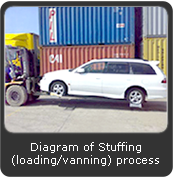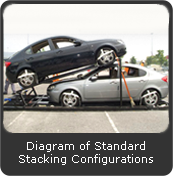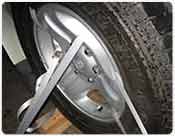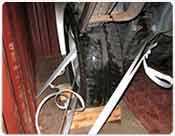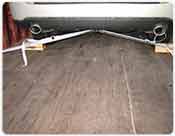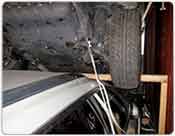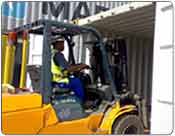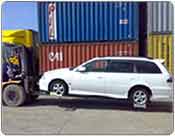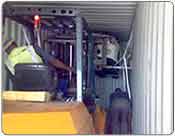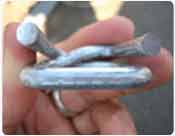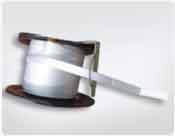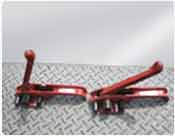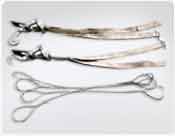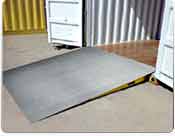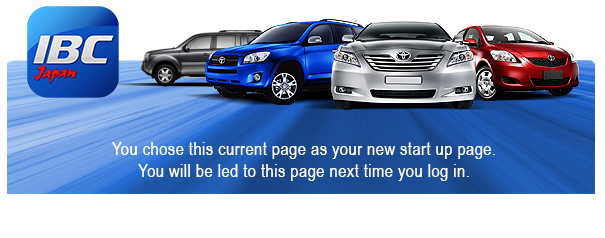Containerized shipping space is currently more readily available than Roll-on Roll-off (RoRo) for used car exports from Japan.
To minimize shipping delays due to recurring shortages of shipping space, we have developed and expanded our containerization services in our pre-export processing centers.
Our containerization operations follow the best practices of the industry and ensure that vehicles are properly handled and secured against unnecessary damage.
Our personnel are experienced and trained professionals who use only proper tools and equipment specifically designed for loading and unloading vehicles into containers.
Stuffing (loading/vanning) process
1. Vehicles are secured to the floor with lumber tire stoppers which are nailed to the wooden floorboards.
2. Vehicles that need to be elevated or will require inclination are handled using special forklifts which position the vehicle to the desired angle or height
3. Once positioned, the vehicle's emergency brakes and steering wheel are locked and the transmission gear engaged
4. To secure the vehicle further, a network of wire slings, hanging belts and specially constructed lumber supports are put in place to secure the vehicle from all angles.
5. Vehicles sitting at floor level have their wheels firmly secured with tire stops and several belts are fastened to strategic chassis points and attached to the container.
This process is carefully done one vehicle at a time and from the back of the container van to the front. Stuffing configurations vary depending on the vehicles loaded and
the size of the van. The container van space is maximized while making sure that vehicles are properly secured and fastened to avoid damage while in transit. Each vehicle loaded is carefully inspected and reviewed
before the container van is approved for release. The container van is then sealed.
Recommended de-vanning process
1. Upon reaching their destinations, the container is lowered to ground level using a special reach stacker that moves container vans without tilting, thereby ensuring the
integrity of the loaded vehicles. When possible the use of a dock or cargo bay is recommended.
2. Load ramps are attached to the door of the van to facilitate smooth access for the forklift.
3. Forklifts (four-ton forklifts with 4.5 meter-long forks and a low mast for loading and unloading cars in tight container spaces) should be employed to support the vehicles
one by one while the strapping and supports are removed.
4. After the vehicles are freed, they can then be removed from the container.
Damage and Claims Note
Where the de-vanning/unloading process is arranged by the consignees themselves, IBC Japan accepts no liability for any resulting damage that may be incurred from any mishandling.
Photos and surveyor report prior to de-vanning/unloading are required as proof to process any claim against the vanning/loading company in Japan.
Click images to view more photos



